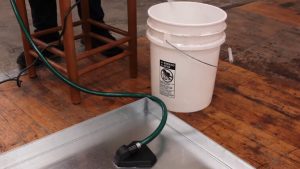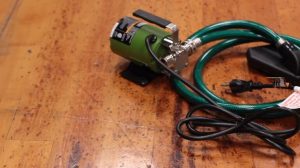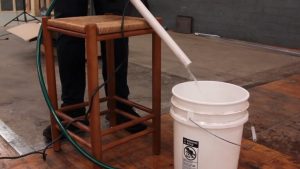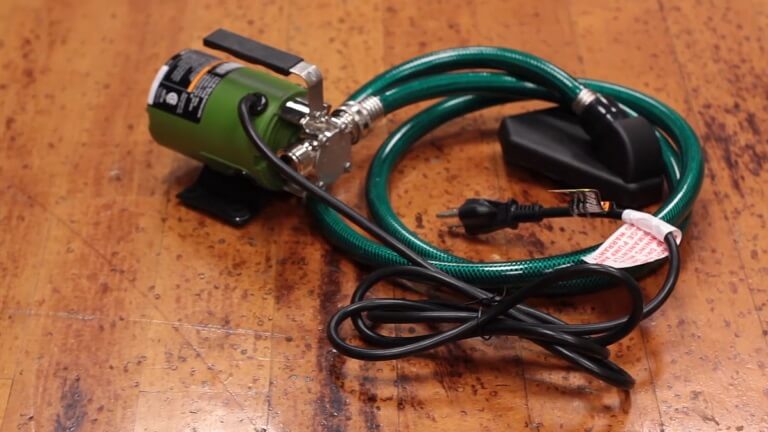We do a lot of things to have a balanced life. This is the reason we use different helpful technologies and methods. Water removal or transferring from one place to another is a challenging task.
If we do these tasks manually, we won’t be able to get such a balanced life. It’s because manual water transfer requires a lot of labor and time. In this case, the water transfer pumps are excellent assets.
What is a Water Transfer Pump?
A water transfer pump is designed to move water from one location to another. It creates pressure that pushes water through a hose or pipe, making it ideal for various applications. Depending on their design and capabilities, these pumps can handle different water types, including clean, muddy, or even wastewater.
Water transfer pumps are commonly used in agriculture for irrigation, construction for dewatering sites, and in emergencies for flood response. They come in various types, such as centrifugal, diaphragm, and submersible pumps, each suited for specific tasks. These pumps are essential tools for efficiently managing water across multiple industries and situations.
Why Water Transfer Pump?
You should choose these pumps to raise water from the depth of the well, river, lake, or other sources. You can’t just use the bucket to pull a vast amount of liquid. Transfer water pumps can draw water and flow to any specific area.
When you install a top-quality water transfer pump, it will do the job automatically. It can move water at high volume (GPH or GPM) with the help of the motor. You need to turn on the device to run a high-quality water transfer pump: no more labor or use of excess tools.

Definition of Water Transfer Pump
Usually, these pumps are known as utility pumps. You may have heard them as other names like transfer water pump, sump pump, wastewater transfer pump, etc. This kind of pump runs with a powerful motor. The device runs on liquid fuel like petrol and diesel. Some pumps run with direct usage of electricity or gas. They don’t require any liquid fuel.
A water transfer pump can perform multiple types of tasks. It can drain water, oil, and other liquids using long pipes. There are different variations of the top-rated water transfer pumps. Among them, these below are accessible:
Electric pumps: These pumps require electricity to move water. Most of the time, electronic devices are portable, small to medium, and have moderate power. Usually, this kind of pump is available in municipal communities.
You can collect water from the well or pond and store the water in a reservoir for regular use. These pumps are economical, eco-friendly, and less noisy. However, many manufacturers now produce more powerful electric water pumps for heavy-duty projects. The problem with this pump is that it may be less satisfactory if you don’t have regular access to electricity. You should go to other variations.
Engine-powered pumps: These pumps are notably robust and active for transferring considerable water. They have a combustion engine that runs on diesel or petrol. You need to pour these fuels into the engine’s fuel chamber.
Engine-powered water transfer pumps are conventional in design. They have a high horsepower to eliminate lots of water. If you wish to empty a pond or drag water from the pool, wells, river, etc., engine-powered pumps are a great choice. These are portable pumps with no electricity requirement. However, the combustion engine makes this device heavier.
Diaphragm pumps: If you live in areas with frequent rainfall, diaphragm water transfer pumps would be best. These pumps can transfer thicker fluids. These devices can pull water with small particles in it.
Diaphragm pumps are usually used in sewage systems. They can move highly reliable or mud-containing water.

Jet pumps: Jet pumps come in a lightweight and portable design. Modern jet water transfer pumps run on electricity. These are relatively lightweight and small in size. However, you can also buy a jet pump with petrol or diesel.
Jet pumps are used to draw water from deeper sources like wells. In many industries, these pumps are used to clear liquids or fluids having wastage. Let’s discuss more critical things about top-quality water transfer pumps:
Water pressure and Max-head: Each water transfer pump has sufficient pressure to transfer the water at the right spot. This water pressure created by the pump determines how far it can move the water. Water pressure is also known as the maximum head point of the pump.
For example, you want to raise water from 8 meters depth of a lake depth. You want to move water at 15 meters above the pump. Then you should choose a pump with a max head of 25 meters. This point is called max head. At the max head of the pump, the water pressure remains zero. In easy words, the machine can move water to a maximum distance of 25 meters.
Water flow rate: Usually, this is measured by how many gallons of water the pump can move within a minute or hour. Gallons per hour (GPH) means the pump can transfer certain gallons of water within 60 minutes after it starts working. Some manufacturers use it to measure the amount in Gallons per minute or GPM. A standard transfer water pump has a 300-450 GPH flow rate.
Inlet size: The size of the inlet is also a vital matter of water transfer pumps. It determines how much the pump can drain. The pump will draw and exhale water faster if the inlet is larger. Pumps with a more significant channel can fill water tanks or pools. This is because the pump saves time when transferring fluids.
Usually, pumps with 1-1 5” size inlet are suitable for frequently draining liquid and with zero hassle. When you are about to buy a water transfer pump, make sure the inlet size fits your needs.
Priming a Water Transfer Pump
Before purchasing the best water transfer pump, you should know how to prime the device. When you keep the machine shut off for a long time, it requires prime to work again. It is the combined task of flushing water back into the device. Then, force the water through the machine. It helps to gain ample pressure for transferring fluids.
First, you should switch off the pump. It ensures safety for you. Try to locate the plumbing fixture near the water tank. This fixture allows accessing the pump system. Then, bring a large hose and connect one end to any individual water source. Flush the hose by running water inside it for a couple of seconds.

Then, keep the hose inside the plumbing fixture. Do the same thing you did earlier: flow the water inside. You will hear some noise caused by air while flushing the water. Wait for moments till the water enters the pump. The gauge will let you know if the water goes inside. Water will come out of the pump from another side.
Run the water for at least one minute. Then, stop flushing the water, and thus, the priming of the pump finishes. Disconnect the hose and restore power to the pump. Do the whole process once or twice more if the pump does not create sufficient water pressure.
Conclusion
The water transfer pump is a valuable device. The information included in this article gives essential but necessary information about affordable transfer water pumps. Hope you have learned many crucial things about the following water removal pumps.

